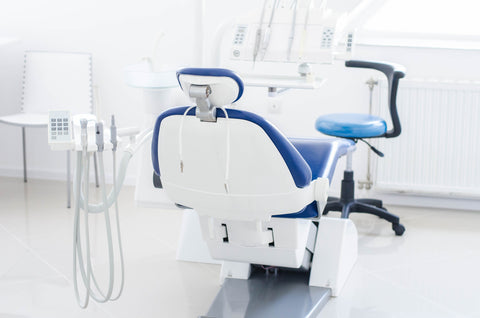Digital dentistry has revolutionised modern dental practices, transforming the way dental procedures are performed and improving patient care. At the heart of this transformation is the dental chair, which plays a crucial role in facilitating digital workflows and enhancing the overall dental experience.
Evolution of Dental Chairs in Digital Dentistry
Over the years, dental chairs have evolved in conjunction with digital technologies, adapting to the changing needs of dental professionals and patients. The integration of digital imaging and scanning capabilities into dental chairs has provided dentists with a powerful tool for accurate diagnosis and treatment planning.
Additionally, advancements in chairside computer-aided design (CAD) and computer-aided manufacturing (CAM) technologies have enabled dentists to fabricate restorations directly in the dental office, saving time and enhancing convenience for patients.
Features and Benefits of Digital Dental Chairs
Digital dental chairs offer a range of features and benefits that improve the dental experience for both patients and dentists. Intraoral scanners, for example, have revolutionised the process of capturing impressions by providing accurate digital representations of the patient's dentition. This eliminates the need for uncomfortable traditional impressions and enables precise treatment planning.
Design software used in conjunction with digital dental chairs allows dentists to create natural-looking restorations and treatment plans with exceptional aesthetics and functionality. Milling machines integrated into dental chairs offer versatility in fabricating various dental restorations, from crowns to veneers, with high precision and efficiency.
Chairside sinter furnaces further enhance the workflow by enabling efficient and precise processing of restorations, ensuring optimal fit and durability.
Materials for Chairside Digital Dentistry
The availability of a wide range of materials is a key aspect of chairside digital dentistry. Poly Methyl methacrylates, composite resins, and ceramics are commonly used materials that offer excellent mechanical properties and esthetics. These materials have been extensively researched and proven to provide reliable outcomes in clinical applications.
Each material group has its own strengths and clinical indications, allowing dentists to choose the most suitable material for each case based on scientific evidence and patient-specific factors.

Enhancing Patient Experience with Digital Dental Chairs
Digital dental chairs have transformed the patient experience by improving treatment efficiency and reducing chair time. The streamlined digital workflows enable dentists to perform procedures more quickly and accurately, resulting in shorter appointments and fewer visits. Patients benefit from enhanced visualisation through digital imaging and treatment planning software, allowing them to actively participate in their dental care decisions.
Same-day restorations are now possible with chairside digital dentistry, eliminating the need for temporary restorations and multiple appointments. This not only saves time but also enhances patient satisfaction and convenience.
Integration of Artificial Intelligence (AI) in Dental Chairs
Artificial intelligence (AI) has found its way into dental chairs, further enhancing diagnostic capabilities and treatment outcomes. AI algorithms can analyse digital images and data to assist in the generation of digital smile designs and treatment plans.
This technology has the potential to improve the accuracy and efficiency of treatment decisions, leading to better treatment outcomes. AI also holds promise in predictive diagnosis and robotic endodontic surgery, revolutionising the field of dentistry with its potential for precision and automation.
Future Perspectives and Challenges
The future of dental chairs in digital dentistry looks promising, with anticipated advancements and innovations on the horizon. Continuous research and development are expected to result in even more advanced chairside technologies, expanding the range of treatments that can be performed digitally.
However, challenges such as cost-effectiveness, dependability, and regulatory compliance need to be addressed to ensure the widespread adoption of digital technologies in dental practices. Training and integration of digital workflows into existing practice systems will also be crucial for successful implementation.
Final Thoughts
In conclusion, dental chairs play a pivotal role in the digital dentistry revolution. The integration of digital technologies into dental chairs has transformed the way dental procedures are performed, enhancing diagnostic capabilities, treatment outcomes, and overall dental practice efficiency.
With ongoing advancements and the potential integration of AI, the future of dental chairs in digital dentistry holds immense promise for improved patient care and treatment outcomes. Dentists and dental professionals should embrace these technological advancements to provide their patients with the highest level of dental care in the digital era.
At MES Australia, we understand the significance of providing state-of-the-art dental equipment that meets the evolving needs of dental practices. With over 60 years of experience, we take pride in being a trusted supplier of high-quality dental chairs and equipment in Australia.
For all your medical and dental supply requirements, please call us today on 1300 342 013 or leave an enquiry.


